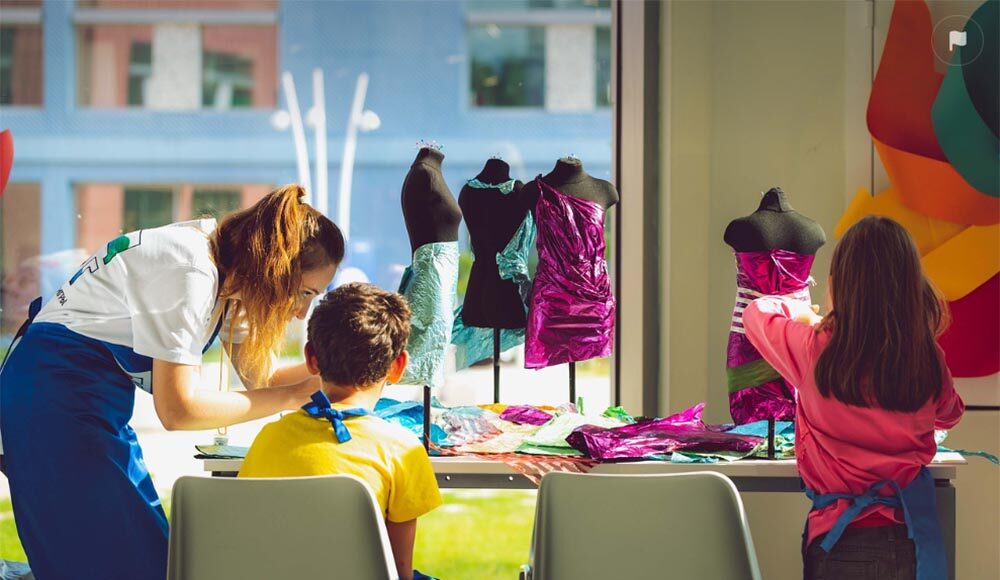Fashion has always been more than clothing—it’s a language of self-expression, identity, and creativity. In the same way that mastering a language like English through tools such as the Duolingo English Test opens doors to new opportunities, embracing sustainable fashion allows individuals to express their values and authenticity in a conscious way. Today, personal style isn’t just about trends—it’s about purpose, story, and substance.
What Is Sustainable Fashion Really About?
At its core, sustainable fashion isn’t just a passing trend—it’s a movement toward mindful consumption. It encourages us to buy less, choose well, and make it last.
Instead of chasing every new release, people are learning to connect with their clothes, seeking meaning and longevity over mass production.
Sustainability in fashion involves:
- Ethical sourcing – ensuring materials are produced with respect for people and the planet.
- Eco-friendly fabrics – from organic cotton to recycled polyester.
- Fair labor practices – supporting workers’ rights and safe working conditions.
- Circular design – promoting reusing, repairing, and recycling garments.
This approach isn’t just about protecting the environment—it’s about redefining beauty and creativity around principles of responsibility and intention.
The Shift From Fast Fashion to Conscious Style
For decades, fast fashion dominated wardrobes. Shoppers were driven by affordability and instant gratification, often unaware of the hidden costs: pollution, unethical labor, and waste.
Now, consumers are waking up. According to Vogue’s feature on how Gen Z is redefining sustainable fashion, more than 60% of young buyers prefer brands that prioritize sustainability and transparency.
Fashion as a Form of Language
Just as language allows us to share ideas and feelings, fashion communicates who we are without words. Every outfit tells a story—of culture, mood, and self-image. Sustainable fashion takes this one step further, turning style into a dialogue about ethics and values.
Think of it as “grammatically correct” fashion—the structure and syntax of style done right. You don’t have to follow every rule, but you learn to build meaning through your choices.
The Rise of Timeless Wardrobes
Fashion’s tempo is finally slowing. Capsule wardrobes, thrifted finds, and slow-fashion collections are reshaping what it means to be stylish—favoring pieces that tell a story, age gracefully, and make dressing feel intentional rather than impulsive.
This shift is visible even on the red carpet and in royal closets: repeating beloved looks has become an accepted and celebrated choice among style leaders. As Elle’s feature on Kate Middleton’s re-worn outfits shows, outfit repetition now reads as confidence and care—not lack of creativity. It’s not about having less—it’s about loving what you own more deeply.
Fashion’s Global Responsibility
The fashion industry contributes nearly 10% of global carbon emissions, making it one of the world’s largest polluters. Sustainable fashion challenges this by promoting greener production and cleaner supply chains.
Key initiatives include:
- Water-saving dye techniques
- Zero-waste pattern design
- Upcycling discarded materials
- Carbon-neutral shipping
When consumers support ethical brands or secondhand shops, they directly participate in reducing this footprint. Every purchase becomes a small vote for a cleaner planet.
The Future of Sustainable Style
Sustainability is no longer niche—it’s the future of fashion.
Innovations in biodegradable fabrics, 3D printing, and digital fashion are revolutionizing how we think about clothing. Some designers are even creating virtual outfits to reduce material waste entirely.
How to Make Sustainable Choices Effortlessly
You don’t need to overhaul your closet overnight. Sustainability starts with small, intentional steps:
- Shop mindfully. Ask: “Do I need this?” or “Will I wear it at least 30 times?”
- Research materials. Natural fibers like hemp, linen, and organic cotton are eco-friendly.
- Support small makers. Local artisans often produce unique, ethical designs.
- Learn basic repairs. A few stitches can save an outfit and the environment.
- Recycle or donate. Keep garments out of landfills and give them a second life.
Each mindful decision makes a difference—and together, those choices shape an industry.
Final Thoughts: Style That Speaks From the Heart
True style isn’t defined by what you wear but by the intention behind it. Sustainable fashion is the modern voice of elegance—where every stitch, seam, and silhouette tells a story of mindfulness.
It reminds us that style is a sentence, and sustainability is its punctuation—a way to give meaning, pause, and depth to self-expression.
In the same way that mastering language opens up new ways to connect, embracing sustainability opens up a richer, more authentic dialogue with the world.
##





